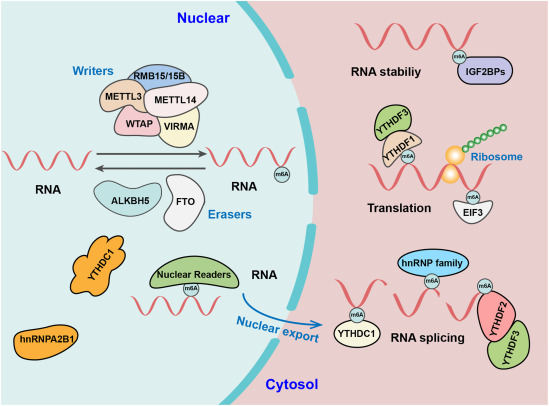
The biological roles and molecular mechanisms of m6A reader IGF2BP1 in the hallmarks of cancer


N6-methyladenosine (m6A) is the most abundant and well-investigated internal RNA modification in eukaryotic RNAs, affecting its target gene expression by controlling RNA localization, splicing, stability, and translation. m6A modifications are regulated by m6A methyltransferase complex, demethylase, and reading proteins. Insulin-like growth factor-2 mRNA-binding protein 1 (IGF2BP1), a member of a conserved family of single-stranded RNA-binding proteins, has recently been identified as a vital m6A reading protein. IGF2BP1 is highly expressed in various tumors and is associated with poor prognosis and treatment resistance. Furthermore, previous studies have shown that IGF2BP1 plays critical roles in regulating various cancer hallmarks, including sustained cell proliferation, cell death resistance, activation of invasion and metastasis, deregulated cellular energetics, immune evasion, and unlocking phenotypic plasticity. IGF2BP1 could promote the expression of cancer-related genes by recognizing their m6A sites, thereby altering cell characteristics, and eventually, malignancy. Therefore, IGF2BP1 might be a potential target for tumor diagnosis and anti-tumor therapeutic strategies. This review summarizes the current knowledge on the functional roles and underlying molecular mechanisms of IGF2BP1 in regulating cancer hallmarks. Moreover, we discuss the prospects of IGF2BP1 as a potential tumor diagnosis marker, as well as a potential target for an anti-tumor therapeutic strategy.
